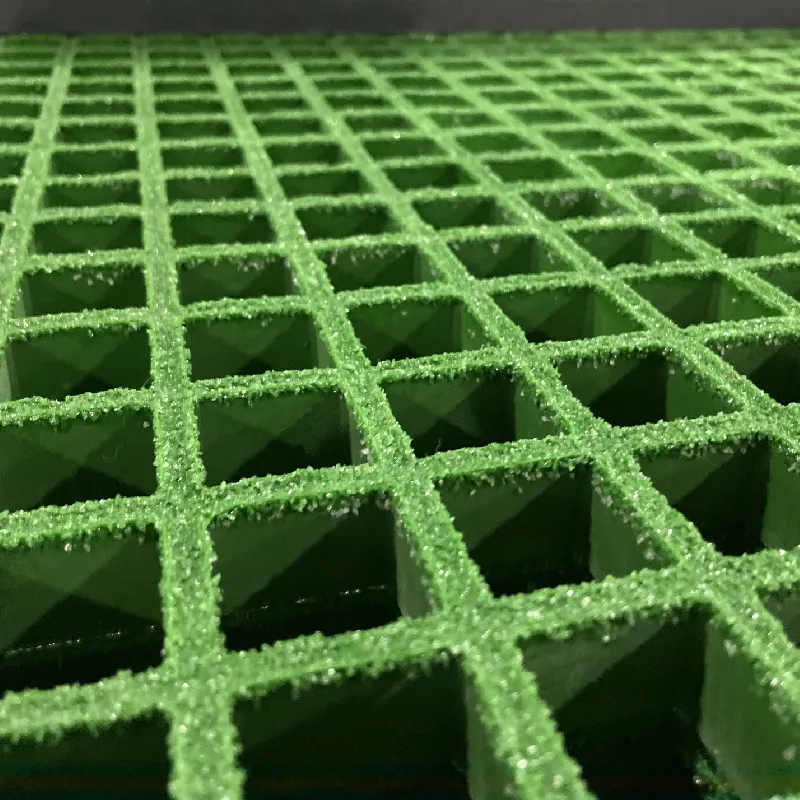loading...
- No. 9, Xingyuan South Street, Dongwaihuan Road, Zaoqiang County, Hengshui, Hebei, China
- admin@zjcomposites.com
- +86 15097380338
- Welcome to visit our website!
Innovative FRP Handrail Solutions for Enhanced Safety and Durability in Various Applications
The Benefits and Applications of FRP Handrail Systems
In recent years, the demand for advanced materials in construction and infrastructure has skyrocketed, leading to the emergence of innovative solutions such as Fiber Reinforced Polymer (FRP) handrail systems. These systems have gained recognition for their exceptional durability, corrosion resistance, and aesthetic appeal, making them ideal for a variety of applications. This article explores the key benefits and diverse applications of FRP handrail systems, highlighting why they are becoming the preferred choice in modern construction projects.
What is FRP?
Fiber Reinforced Polymer (FRP) is a composite material consisting of a polymer matrix reinforced with fibers, commonly made from glass, carbon, or aramid. This combination results in a material that is not only lightweight and strong but also resistant to various environmental factors, including chemical exposure and moisture. These inherent properties make FRP an outstanding option for handrail systems, particularly in challenging environments where traditional materials may fail.
Advantages of FRP Handrail Systems
1. Corrosion Resistance One of the most significant advantages of FRP handrail systems is their exceptional resistance to corrosion. Unlike metal handrails that can rust and degrade over time when exposed to moisture, chemicals, or harsh weather conditions, FRP remains unaffected. This property makes it particularly suitable for applications in coastal areas, chemical plants, or places prone to prolonged exposure to water.
2. Lightweight yet Strong FRP is considerably lighter than traditional materials like steel or aluminum. This reduction in weight simplifies installation processes, lower transportation costs, and minimizes the structural load on existing frameworks. Despite its lightweight nature, FRP still boasts impressive tensile strength, making it a reliable choice for safety applications.
3. Low Maintenance The durability of FRP handrail systems translates to low maintenance requirements. They do not require painting, sealing, or regular upkeep, as traditional metal or wood materials do. This aspect not only saves money but also time, allowing facilities to allocate resources more effectively.
4. Design Flexibility FRP can be easily molded into various shapes and designs, offering exceptional flexibility in aesthetics. Architects and designers can create visually appealing handrail systems that complement the overall design of a building or structure. Additionally, FRP can be manufactured in different colors and finishes, providing endless possibilities for customization.
5. Safety and Compliance FRP handrail systems can be engineered to meet stringent safety codes and regulations. The non-conductive properties of FRP make it an excellent option for electrical environments, minimizing risks associated with electrical hazards. The material’s ability to withstand impacts also enhances safety for users.
frp handrail system

Applications of FRP Handrail Systems
Given their myriad advantages, FRP handrail systems find applications across various sectors
- Industrial Facilities Chemical plants, water treatment facilities, and other industrial environments benefit from FRP's corrosion resistance and low maintenance, ensuring safety and reliability.
- Transportation In railways, airports, and commercial bus stations, FRP handrails provide a safe and durable solution that can withstand heavy foot traffic and harsh weather conditions.
- Marine Environments Boats, piers, and coastal constructions often utilize FRP handrails due to their resistance to marine conditions and chemicals, ensuring long-lasting performance and safety.
- Residential and Commercial Buildings In both residential and commercial settings, FRP handrail systems have gained popularity for balconies, stairs, and walkways, offering aesthetics combined with safety without the worry of rust and decay.
- Recreational Areas Parks, swimming pools, and playgrounds frequently use FRP handrails for their safety features, durability, and design versatility, catering to the needs of both functionality and user experience.
Conclusion
As the construction industry continues to evolve, FRP handrail systems represent a significant advancement in safety, durability, and design flexibility. Their ability to withstand harsh environments while remaining low maintenance makes them an attractive choice for a variety of applications. With an increasing focus on sustainability and efficiency, FRP materials are poised to play a vital role in shaping modern infrastructure and design. Whether in industrial settings, public transportation, or residential projects, FRP handrail systems are a smart investment that ensures both safety and aesthetic appeal for years to come.
-
GRP Structures: The Future of Lightweight, High-Performance EngineeringNewsJun.20,2025
-
FRP Water Tank: High-Performance Storage for Corrosive and Clean Water SystemsNewsJun.20,2025
-
FRP Square Tube: The New Industry Standard for Chemical and Structural ApplicationsNewsJun.20,2025
-
FRP Pultruded Profiles: The Ultimate Choice for Lightweight Structural StrengthNewsJun.20,2025
-
FRP Handrails: The Safer, Smarter, and Stronger Choice for Modern InfrastructureNewsJun.20,2025
-
FRP Grating: The Smart Solution for Durable, Lightweight Industrial FlooringNewsJun.20,2025
-
Why Choose a Galvanized Water Tank for Your Storage NeedsNewsMay.21,2025
